Artist-in-Residence Program
2023 Resident Artist
ARCUS Project’s Artist-in-Residence Program received 330 applications from abroad (65 countries and regions) and 14 applications from Japan. Following a careful screening process, Laura Cooper (UK) and Shindo Fuyuka (Japan) have been selected as the 2023 residents. The artists will participate in a residency at ARCUS Studio in Moriya, Ibaraki, for 90 days from September 7 to December 5, 2023.
As the judges for this year’s applications, we welcomed Goto Oko, a curator at Contemporary Art Center, Art Tower Mito and Che Kyongfa, a curator at Museum of Contemporary Art Tokyo who made the selection through a process of discussion with the ARCUS Project Administration Committee.
Overview of the 2023 Selection
One international and one domestic artist have been selected for the 2023 Artist-in-Residence Program. The call for applications was made while the global impact of the Covid-19 pandemic was finally coming to an end, after continuing for approximately three years since 2020. The number of applications thereby exceeded that of previous years, with 330 from abroad and 14 from Japan.
An overview of the applications shows some with a concern for climate change and changes in the environment, others developing a transnational perspective with migration as the point of origin or research focus; and yet others seeking to renew their self-expression through inspiration from the Japanese culture and landscape. Many applications also proposed creating works together with the local community; however, there seemed to be a tendency of this co-creation itself becoming too much the objective. The international artist selected seeks to explore cultural differences relating to animals through hunting, while the artist from Japan will explore the relationship between the land where she lives and that of southern Ibaraki Prefecture, with particular reference to migration and disaster prevention. The two artists will spend 90 days in residence from early September until early December.
Laura Cooper
United Kingdom
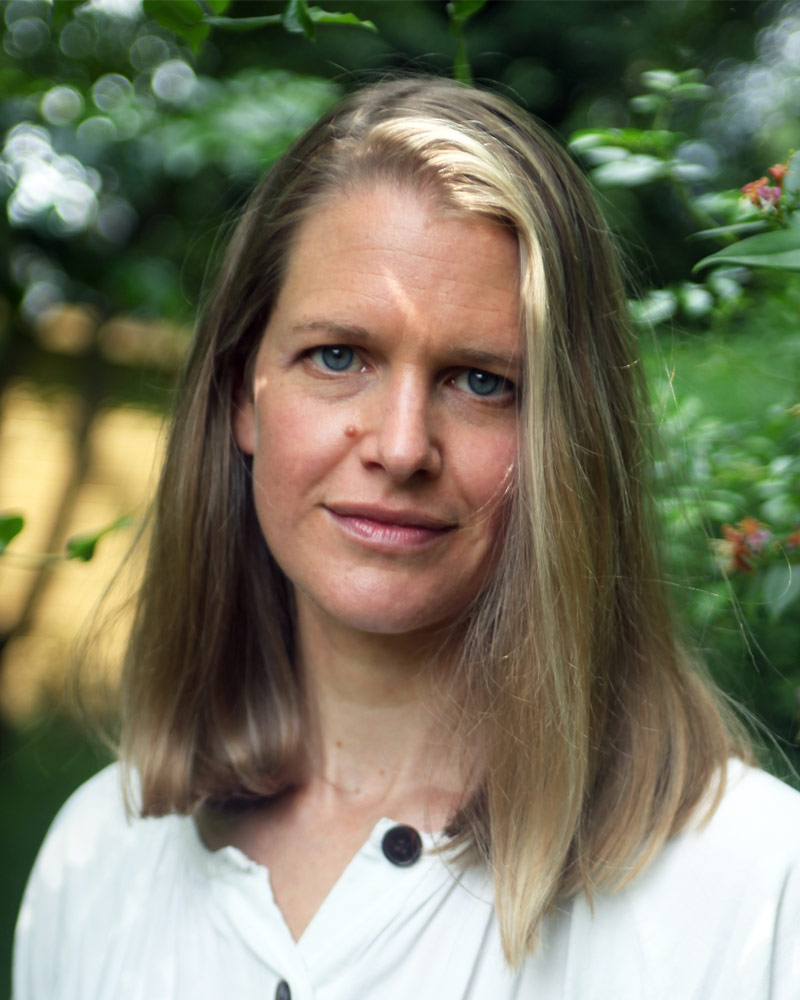
Born in 1983 in Shrewsbury, United Kingdom, and living in Birmingham. Artist and filmmaker Cooper is interested in the physical confinements of the human body, and the un-knowableness of other people and beings. She explores the relationship between human-animal, attempting to inhabit a less anthropocentric reality and creating works toward unknown territories and perspectives. Her moving image work includes documentaries which are variable and poetic, including people in a participatory manner. As she creates her work in response to specific landscapes, animals and communities, she has also collaborated with farmers, hunters, falconers, property developers, therapists, and scientists. For the ARCUS Project, she will focus on cultural differences between the UK and Japan regarding animals with the wild boar as a motif, creating her work while researching hunting sites. Past exhibitions and activities include The Political Animal, performance with Hermione Spriggs (The Showroom, London, 2017), LAM 360° (Ulaanbaatar, Mongolia, 2012), Autumn Almanac: The Voice and the Lens (IKON Gallery, Birmingham, UK, 2012).
https://lauracooper.co.uk
Process

Filming the boar hunting with hunting association members
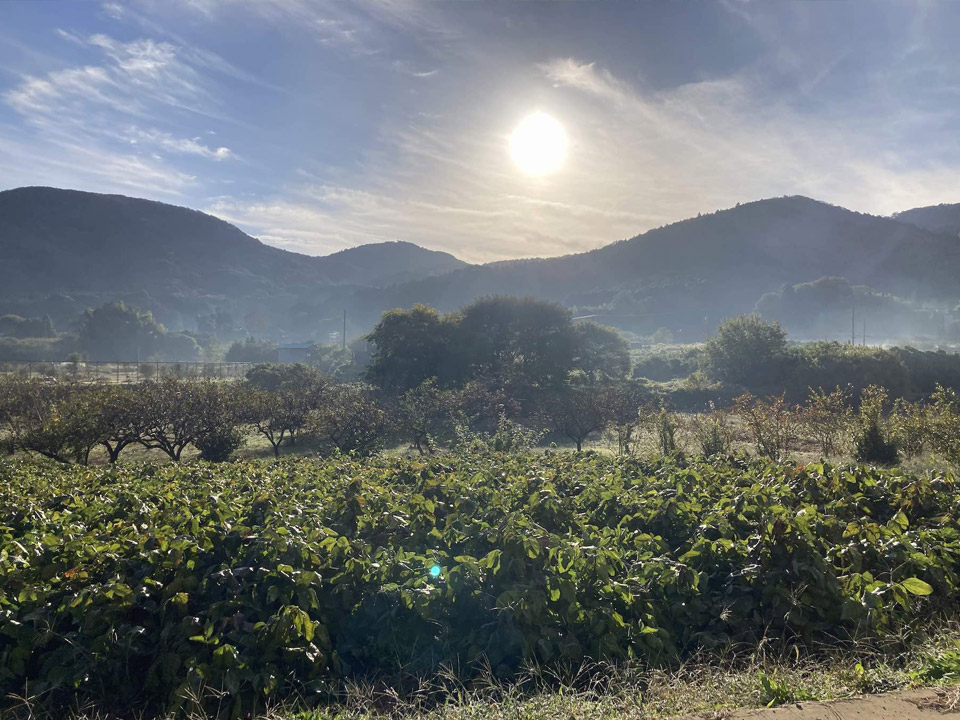
Yasato, Ishioka
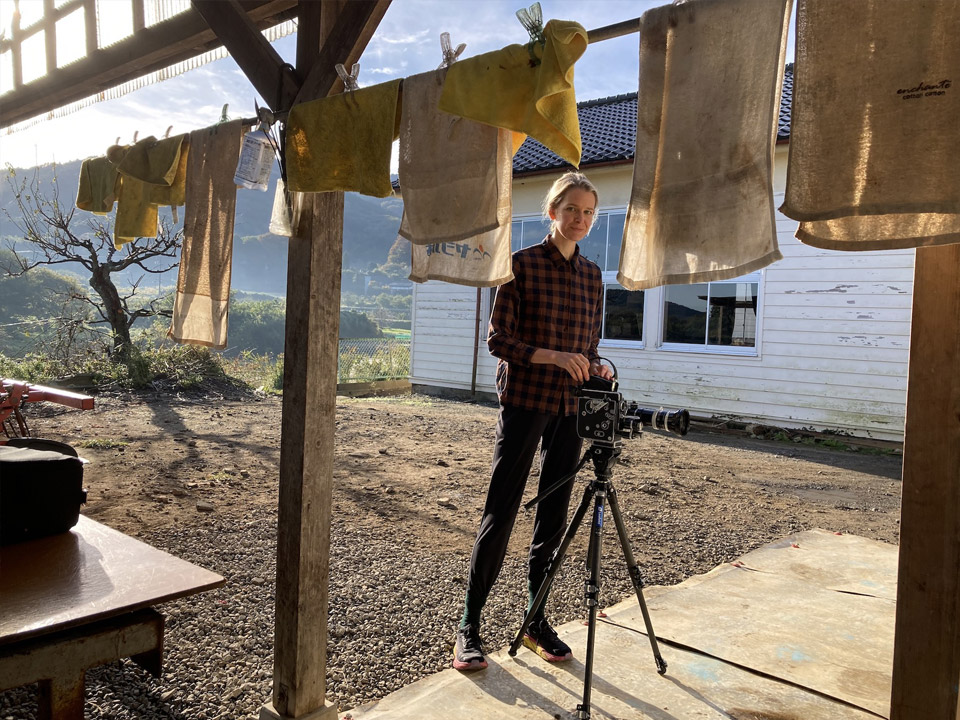
Filming at the butchering facility for wild animals
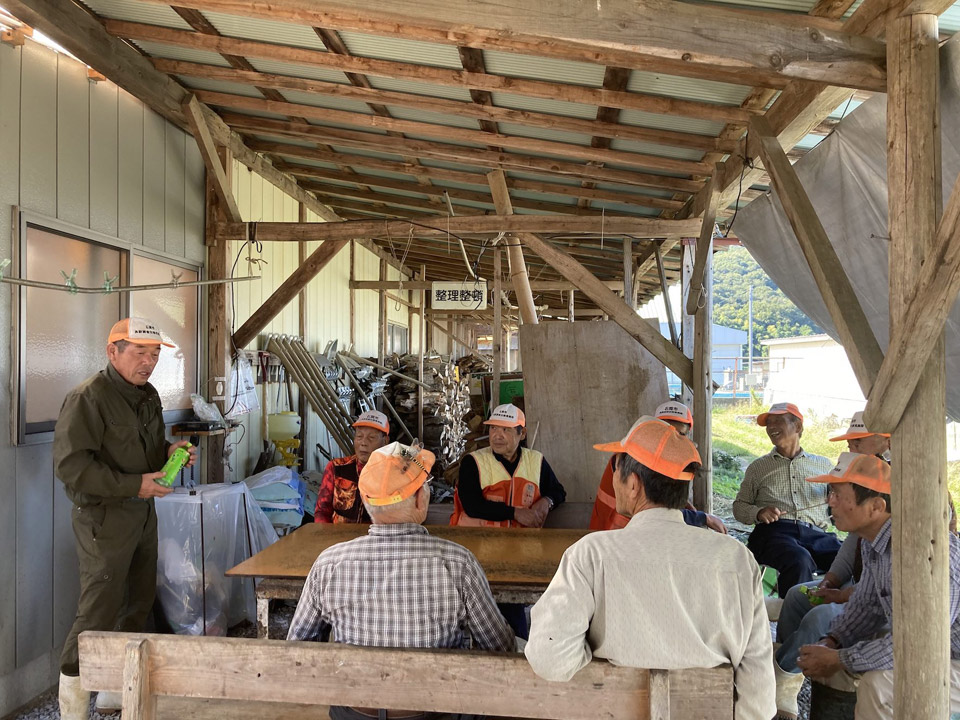
Open Studio
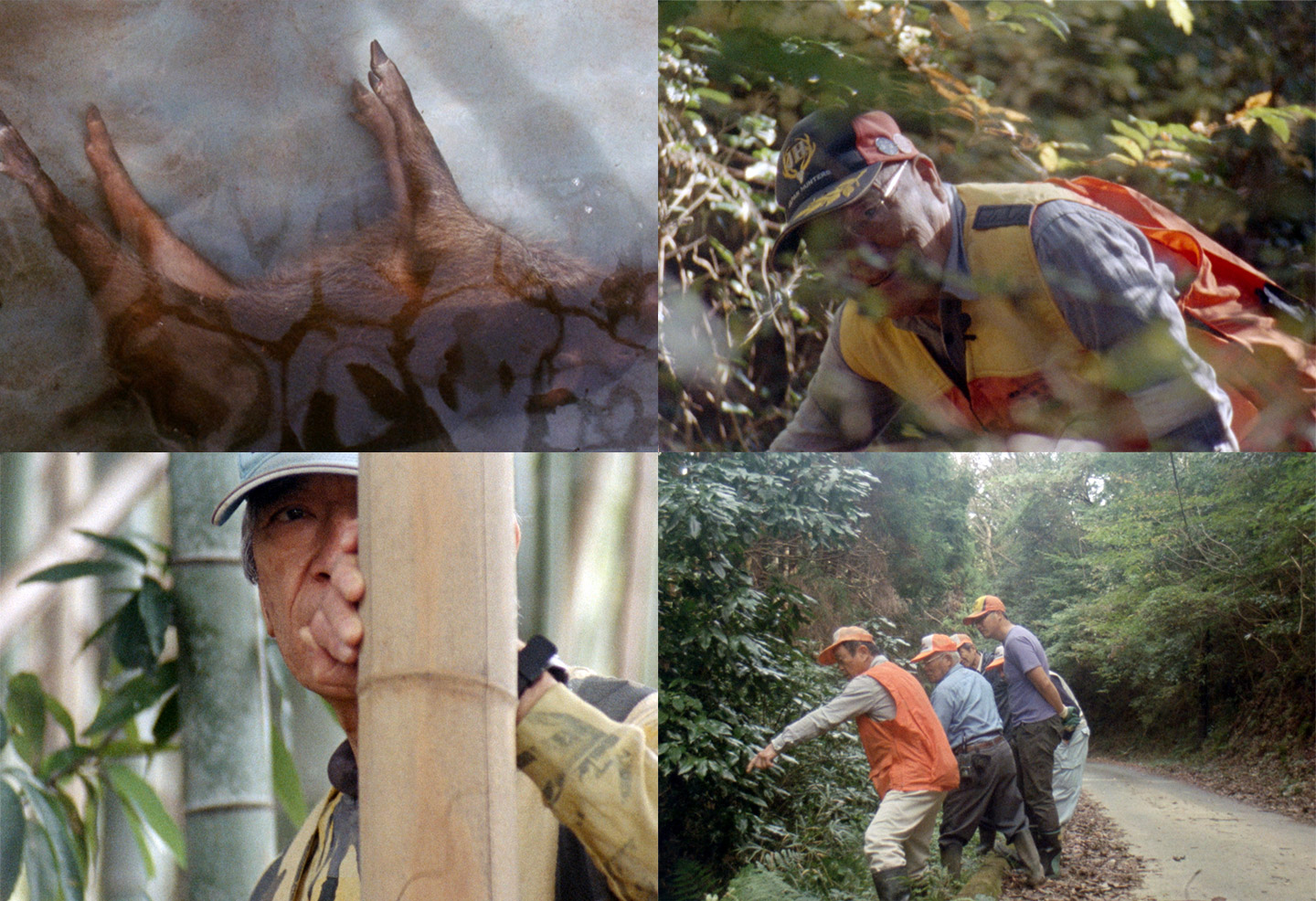
16mm film still from Mountain Whale

Installation
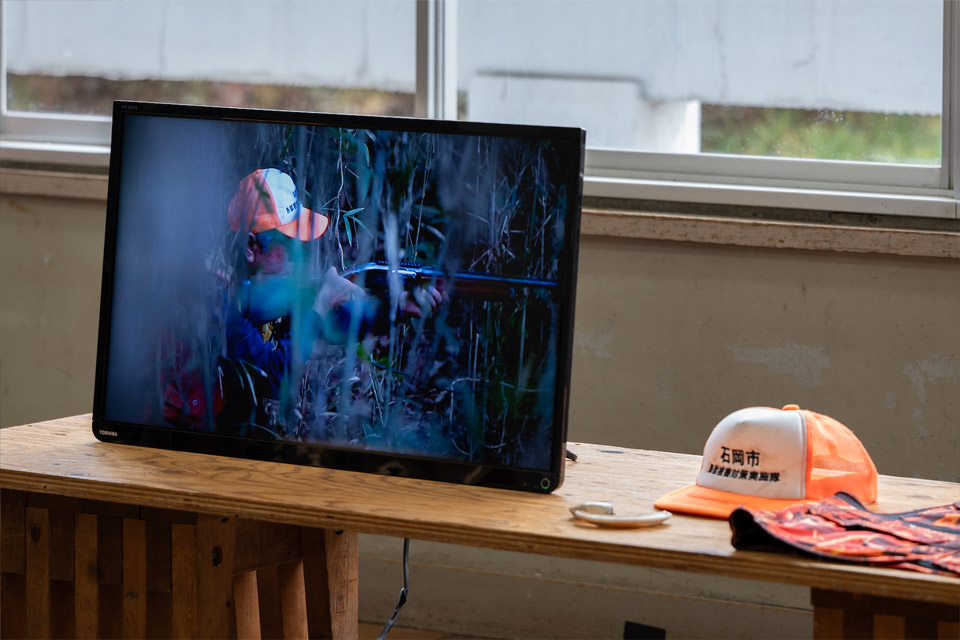
Part
Artist Statement
Mountain Whale
This project continues my long-term investigation to the conflicting dynamics of care and control bound within the human-animal relationships present in hunting subcultures and traditions.
I set out to explore the differing relationships with wild boar in Japan, deemed as pests to be controlled and the UK, promoted as tourist attractions to be photographed. I have been filming the complex work of trapping and hunting conducted by a group of hunters in Yasato, Ibaraki. Here, I have been challenged with how to subvert the camera as an apparatus of capture to one more like embrace.
During this research, I learnt another term for wild boar “Mountain Whale” (yama-kujira) this poetic and trickster-ish word altered the way I have navigated my project thus far, highlighting the mechanism of confusion in the process of camouflage. The term evolved during the Edo period as a way of referring to wild boars to circumvent hunting laws also drawing parallels between how boar and whale meat behaves in a hotpot.
I have been making camouflage costumes from plant-based dyes, based those worn by hunters in Yasato. Working with local Moriya residents to re-enact a type of hunting with the camera where bodies emerge and disappear in local bamboo forests.
My resulting 16mm film, which will be completed on the return to the UK will welcome slippages and confusions in both perspective exchange between human language and species sensory apparatus. Contemplating what is classify as ‘wild’ in different rural/urban contexts and vastly different forest UK/Japan habitats.
Reason for Selection
Laura Cooper, who spent a brief period in Japan as a student, will focus on the contrasting relationship between humans and wild boar in the UK and Japan, creating the work Wilder with a combination of 16mm film and performance. The envisaged installation will create an abstracting multi-species forest environment, exploring the parameters of what we classify as “wild” in different rural/urban contexts. In Japan, as hunting traditions are lost the numbers of wild boar are increasing, and the creatures are entering and damaging human living environments in rural and urban areas. Meanwhile, in the UK, the wild boar has only recently been “rewilded” after being hunted to extinction in the 1600s, making the animals tourist attractions in certain landscapes. The ARCUS Project commends the attempt to explore the transition of human life and culture and changes in the natural environment, as well as re-resourcing for the sake of human economic activities, through a comparison of the relationship between humans and boars in the two countries and further future exploration.
Comment for Open Studio
Laura Cooper, an artist based in Birmingham, United Kingdom, explores the cultural differences between Japan and the UK in relation to wild boars, creating film-based works on this theme. Her preliminary research led her to discover that boars are utilized as a tourism resource in the UK, while in Japan, they are regarded as vermin and subject to extermination. This is also connected to our own lives, as we see how damage caused by boars is often reported in the news.
When this residence program began, Cooper first visited a hunting association in Ishioka City. She accompanied the hunters on an actual hunt, observing their clothing and hats, methods used to catch and kill the boar alive, skin and gut it, and their conversations after the hunt. During this period, she captured the process using both a digital camera and 16mm film. Digital cameras make it possible to react instantaneously to the situation and film accordingly. In contrary, 16mm film requires detailed work such as checking light levels; yet it is possible to visualize the time of day and weather of the filming location, along with the physicality of the artist.
Further, Cooper focused on the camouflage worn by the hunters, and hand-created hunting wear with dyes extracted from plants. In the open studio, she created a pseudo-forest composed of digital footage, cloth and photographs extracted from Cooper’s own hunting experience. After her residence in Moriya, Cooper will return to Birmingham, to then cover boar-related culture in the UK. She plans to then add the 16mm footage to her work. I cannot help but have high hopes for how she will express the historical and cultural depth represented by the boar in both countries.
(Director, Ozawa Keisuke)
Shindo Fuyuka進藤冬華
Japan
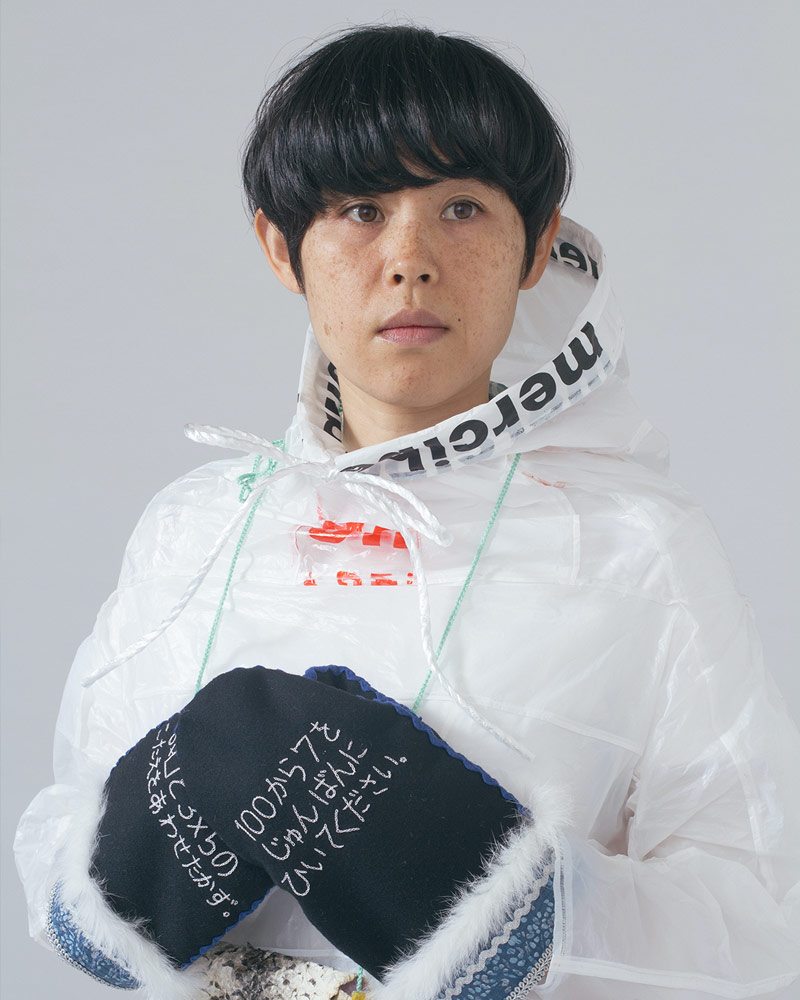
Photo: Komaki Yoshisato
Born in Hokkaido in 1975, and living in Ebetsu City. While unraveling the history and culture of Hokkaido, where she was born and raised, Shindo creates works that shed light on the invisible power relations that propelled the modernization of Japan and other countries beyond. Utilizing the art museums that were institutionalized as a system alongside this modernization and their exhibition methods, she displays objects that reference the lifestyle and culture of Hokkaido. The underlying driving force is the ambivalence between the social desire to ‘preserve’ things through archives, artefacts and folklore, and the distrust of this desire. At the same time, despite the centralized nature of modern society she is also interested in anarchism based on the idea of autonomy, and the situation of local communities, and engages in performances and tours founded on observation and research. During her residency at ARCUS Project, she will conduct research and produce work based on the keywords of migration and disaster prevention. Past exhibitions and activities include Roppongi Crossing 2022: Coming & Going (Mori Art Museum, Tokyo, 2022-2023), Child of Settlers (Moerenuma Park, Sapporo, 2019) and International Studio & Curatorial Program (Participated in artist-in-residence program, ISCP, New York, 2017)
https://www.shindofuyuka.com
活動の様子

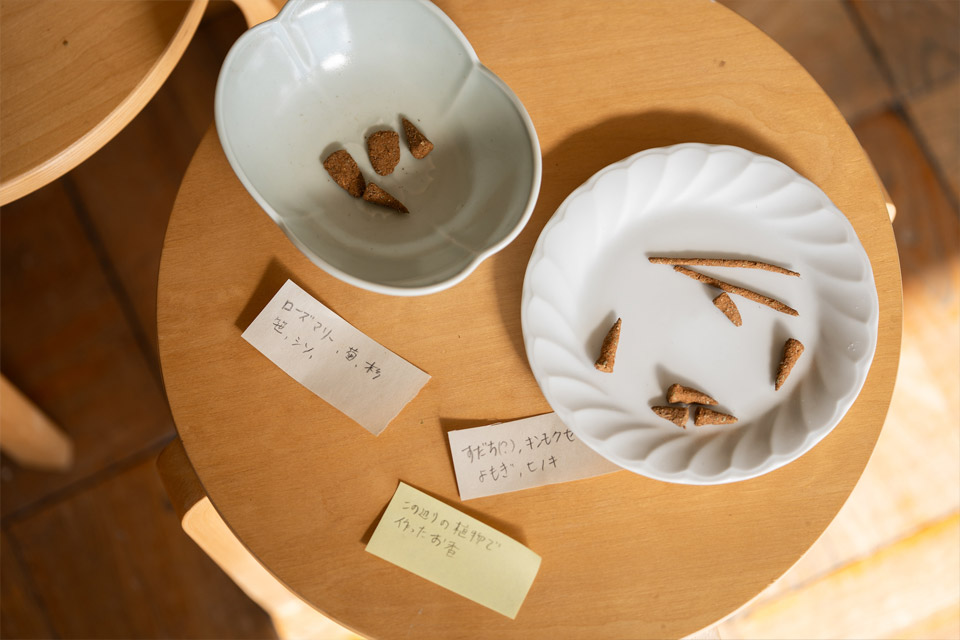
Making incense from plants collected in Moriya

Walking along Kinu river with participants
Open Studio
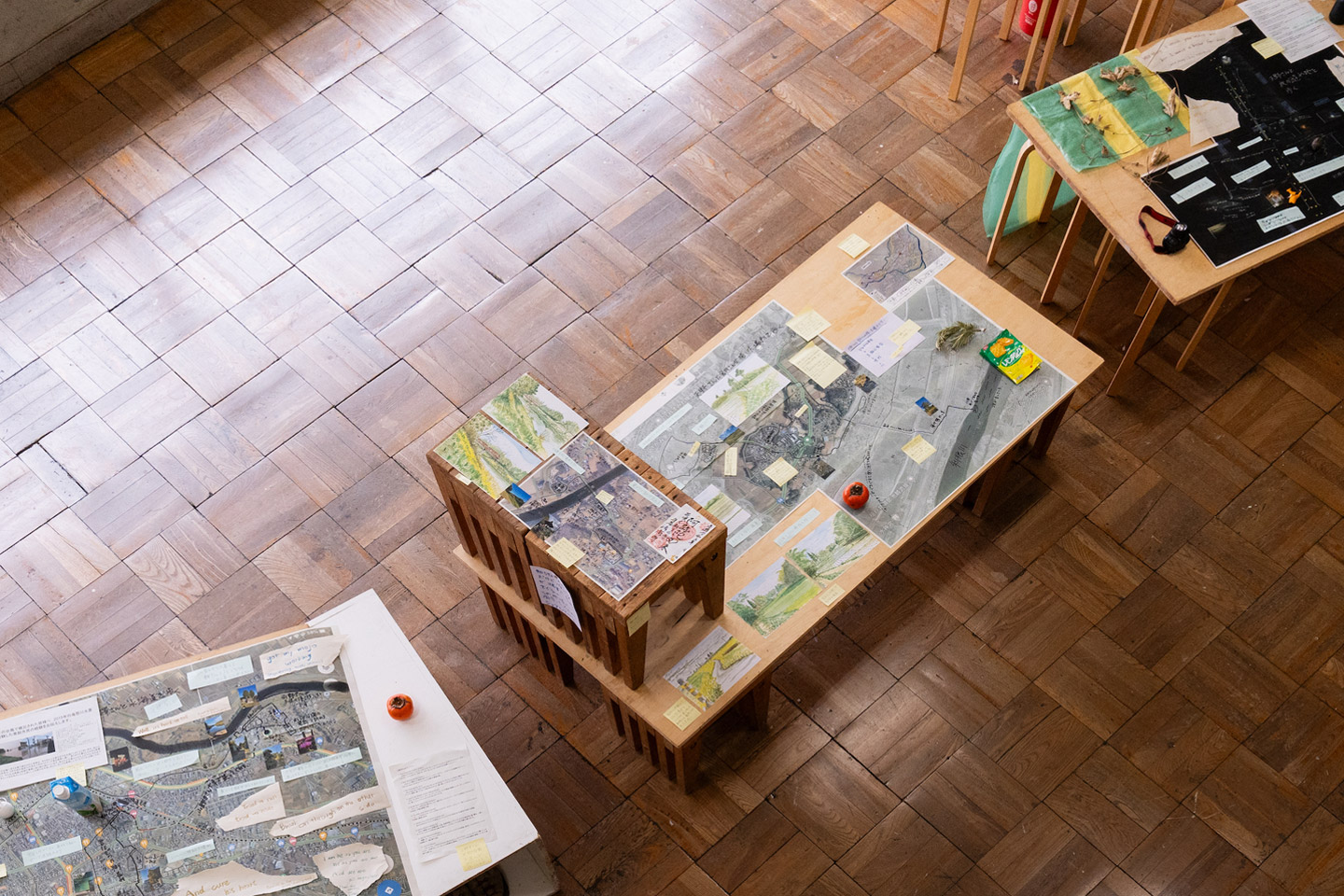
Installation

Part

Part
Artist Statement
Attempting Mutual Understanding
Until now I have often spoken about the history and culture of Hokkaido, but to be honest, I am already tired of this. It might be because even when I speak, I am not able to communicate all that I want to, and it doesn’t really feel like I am getting through. How can being understood, and even further, mutual understanding, be possible? These questions led me to invite several people living in Moriya City or its surrounds to join me in a dialogue, to “exchange each other’s backgrounds.” While it felt a bit too formal for people unfamiliar to each other to just exchange their life stories, by hearing about the local area through exchange between participants who I happened to meet by chance and local organizations involved, Moriya and its surrounding landscape started to feel very familiar to me. Dialogue participants also shared with me about their interests and usual daily activities. Through taking action beyond the dialogue, such as sometimes going out together, I began to care about the participants as individuals, with their own personalities and lives. Through this, I gradually started to see points of commonality or connection between participants who previously had no relation with each other, and feel that this relationship itself seemed to fly beyond me in a more dynamic way. Inviting participants to places I frequent, or going together to see a view liked by another dialogue participant. This is how the attempt for mutual understanding in Moriya is progressing.
Reason for Selection
We commend Shindo’s attempt to relativize her own experience of growing up in a family that had relocated to Hokkaido as settlers and the thoughts that spun from that experience, through temporarily relocating to Moriya. The settlement of Hokkaido cannot be considered in isolation from Japan’s process of modernization. Such external and political factors that lead people to travel to a new place to begin a life there still cast a shadow today on various lands and regions, on a global scale and in a different form. Shindo will seek to discover the larger forces which sustain modernization through an investigation of Moriya and the towns of southern Ibaraki Prefecture, and encounters with people who have relocated there. The ARCUS Project hopes that through her residence she will experience positive encounters and exchanges that will once again open her eyes, and that after her residence is complete she will have a renewed perspective on her familiar Hokkaido, leading to the beginning of new expressive activities.
Comment for Open Studio
The works created by Shindo Fuyuka during her ARCUS Project residency are an experience of the limitations and joy of knowing other people, and of newly learning the difficulty in fully expressing this. Shindo, who was born in Hokkaido to a family who had migrated from Honshu (mainland Japan), is interested in how people select the land on which they live, and how they come to accept their lives there. During her residence, Shindo was able to grasp directly how people living in Moriya City and its surrounds came to reside there, and how they have lived their lives. Rather than tracing what she had assumed in advance, Shindo conducted this in a way of meandering forward, compiling the words of people she happened to encounter by chance. She invited people to the studio for dialogue, then in turn visited places deeply familiar to that person. Next, Shindo invited a different person to once again walk through this same place. Through such a process, initially tentative steps were released into an expanse both spacial and temporal. As stated by anthropologist Tim Ingold, this is an unbroken journey through the landscape, not a passing through time and space that has been segmented by planning. The modest dialogues carrying personal memories somehow come to unexpectedly involve a third party, creating a groove. Yet, when trying to give form to the words exchanged and the landscapes seen through this process, they soon fall out of Shindo’s grasp. How can one represent irreplaceable time and space, which has already passed by? Shindo’s works are the scars of the struggle to draw the faint outlines of the lives of those taking part in the dialogue, as they tremble trying to appear on this land surrounded by the Kinu, Kokai and Tone Rivers.
(Director, Ozawa Keisuke)